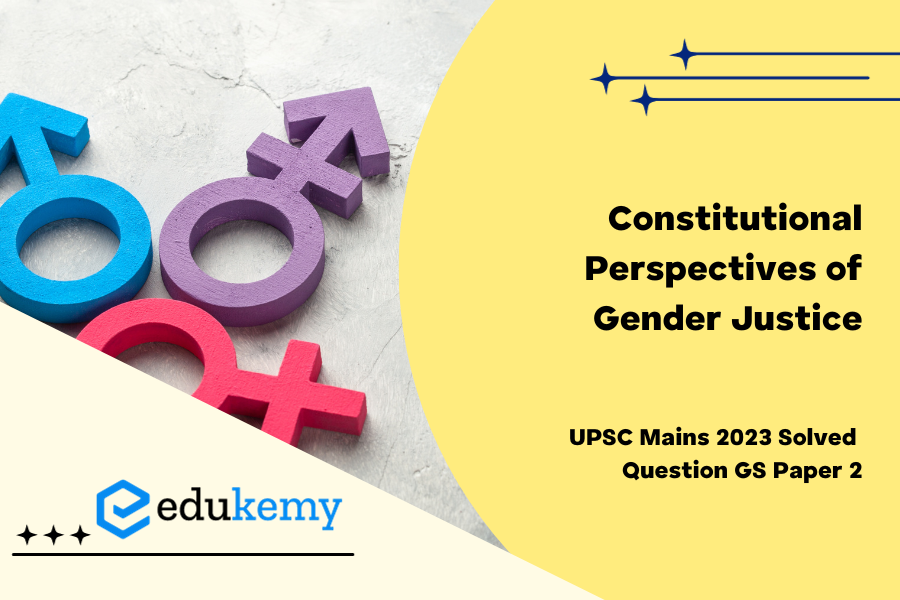UPSC Mains General Studies Paper – 1 Mains 2023
UPSC Mains Civil Services IAS Exam Question Paper – 2023
Contents
Introduction
In the constitutional framework, Gender justice refers to the protection and promotion of equal rights of all individuals of all genders, especially women. The COI aims to establish a just and equitable society and has provided mechanisms to ensure the same.
Body
Constitutional perspective – gender justice
Political –
- The right to vote in the Constitution of India is guaranteed under Article 326. This article states that “the elections to the House of the People and to the Legislative Assembly of every State shall be on the basis of adult suffrage; that is to say, every person who is a citizen of India and who is not less than 18 years of age .It reflects gender positive approach by granting right to vote to every citizen .
- Article 14 of the Indian Constitution talks about equal status or equality before the law. Every person has equal status before the law and the State cannot deny it.
- Article 15 prohibits discrimination on the grounds of religion, race, caste, sex and place of birth. This Article cannot prevent the State from making any special provisions for women and children.
- The Women’s Reservation BilL -or the Constitution’s 108th Amendment Bill is a pending Bill in which India plans to reserve 33 percent of all seats in the Lower house of Parliament of India, the Lok Sabha, and in all state legislative assemblies for women
ECONOMIC –
- Article 16 states that there shall be equal opportunity for all citizens of India in matters of employment or appointment to any office.
- According to Article 39 of the Constitution, the State shall make sure that men and women have an equal right to an adequate livelihood, there is equal pay for men and women, the economic system does not result in the concentration of wealth and the material resources are distributed to serve a common purpose.
- The Equal Remuneration Act, 1976-Under this ACT, the employer must give equal pay or remuneration to men and women for the same work. No employer can, while recruiting, training or transfer, for the same work, or for the work done can discriminate between men and women.
SOCIAL PERSPECTIVE –
- The State shall secure humane conditions for work and for maternity relief according to Article 42 of the Constitution.
- Right to property inheritance through Hindu succession amendment act , 2005 Example case laws – Marry Roy Vs State of Kerala.
- Sexual Harassment of Women at Workplace Act, 2013 .The issue was first brought to light in the Vishaka case in 1992, where sexual harassment of women at their place of work was talked about and legislation for the same was passed. Harassing women at their place of work violates the women’s fundamental rights guaranteed under Articles 14, 15 and 21 of the Constitution of India.
- decriminalizing art 377 Navtej Johar case-the Supreme Court has stated unequivocally that LGBT people’s decision to engage in intimate sexual relations with people of the same sex is a matter of personal choice. It represents their autonomy and self-determination.
Conclusion
Hence, The government of India , supreme court , and other authorities have time and again attempted to implement measures to provide gender based justice .
In case you still have your doubts, contact us on 8792740517.
For UPSC Prelims Resources, Click here
For Daily Updates and Study Material:
Join our Telegram Channel – Edukemy for IAS
- 1. Learn through Videos – here
- 2. Be Exam Ready by Practicing Daily MCQs – here
- 3. Daily Newsletter – Get all your Current Affairs Covered – here
- 4. Mains Answer Writing Practice – here


